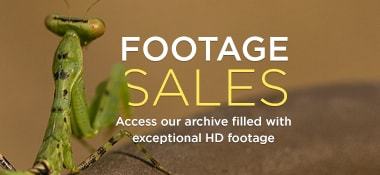Roadkill’s an unfortunate fact of life-and-death in many parts of this increasingly well-roaded planet, and one with very real conservation implications; it’s also a widespread and common source of meat for myriad scavengers.
An example of the diverse scavenging guild that can attend even smallish roadkill comes courtesy of a recent video compilation from northwestern Montana, USA. Posted by Janet Pesaturo of Winterberry Wildlife, the camera-trap footage shows the breakdown of a road-killed wild turkey:
After a weasel and especially some ravens work most of the carcass over, a striped skunk drags the measly remnants—mostly bones, gristle, and feathers, from the looks of it—into a hollow log Pesaturo notes in her post is a regular nap station for a puma.
In the footage compilation, other scavengers at the lean feast include a red fox and a bobcat, shown separately pilfering some of the scraps. Meanwhile, the burly puma commuting to its resting log appears to do little more than sniff at the dinner table. (We’ve written before here about the rich assortment of scavengers that capitalize on puma kills, incidentally.)
Striped skunks—which range throughout all of Montana, and indeed most of North America from southern Canada to northern Mexico—are omnivores with a strongly meat- and invertebrate-leaning diet, and they certainly happily tuck into carrion. This particular skunk’s decision to cache the turkey remnants inside a nook presumably redolent with puma aroma might seem surprising, as skunks definitely sometimes land on mountain-lion menus. But the infamous musk that skunks spray in defence gives them some swagger around bigger carnivores; as we’ve posted about in the past, striped and spotted skunks have been observed bullying and defending carcasses from pumas, despite the epic size difference.
(Perhaps the best-known eater of skunks in North America is the great horned owl, nests of which are sometimes drenched in skunk-musk perfumery. This footage shows a nighttime horned-owl attack on a striped skunk—though be forewarned it’s rather graphic.)
The turkey-scavenging footage also highlights the significance of roadkill as a wildlife-mortality factor. Montana is among the leading states when it comes to the number of wildlife-vehicle collisions per capita (as well as fatalities from such crashes), which is partly a reflection of the state’s abundance and wide distribution of wild animals, including plenty of large-bodied critters such as deer, elk, moose, pronghorn, and bears.
While road-killed ungulates are a regular sight in much of Montana (and elsewhere in North America) and much attention is rightfully paid to the danger highway-crossings pose in some areas to rare carnivores such as grizzlies, the (literal) impact of vehicles on birdlife is sometimes overlooked. As large birds that spend most of their time (and nest) on the ground—and which regularly file along and across roadways—wild turkeys are among the avifaunal groups most at risk of vehicle strikes. So are scavenging birds such as raptors and corvids drawn to roadkill, fruit-eaters winging among roadside plantings, and certain songbirds for whom de-icing and anti-slip treatments such as road salts and sand can be (toxic) attractants, among others.
Special wildlife-crossing structures such as overpasses and underpasses are one way to help critters following tried-and-true foraging routes and migratory corridors safely traverse roads, and indeed wild turkeys have been observed using them. Fencing, diversion poles, animal-crossing warning signs, and removing wildlife attractants along highway corridors are other examples of roadkill-mitigation efforts.
(And on that note, a closing PSA: Slow down and stay alert out on the blacktop!)
Top header image: Alan Krakauer/Flickr



 WTF!?
WTF!?
 Animal Behaviour
Animal Behaviour
 Predator vs Prey
Predator vs Prey










